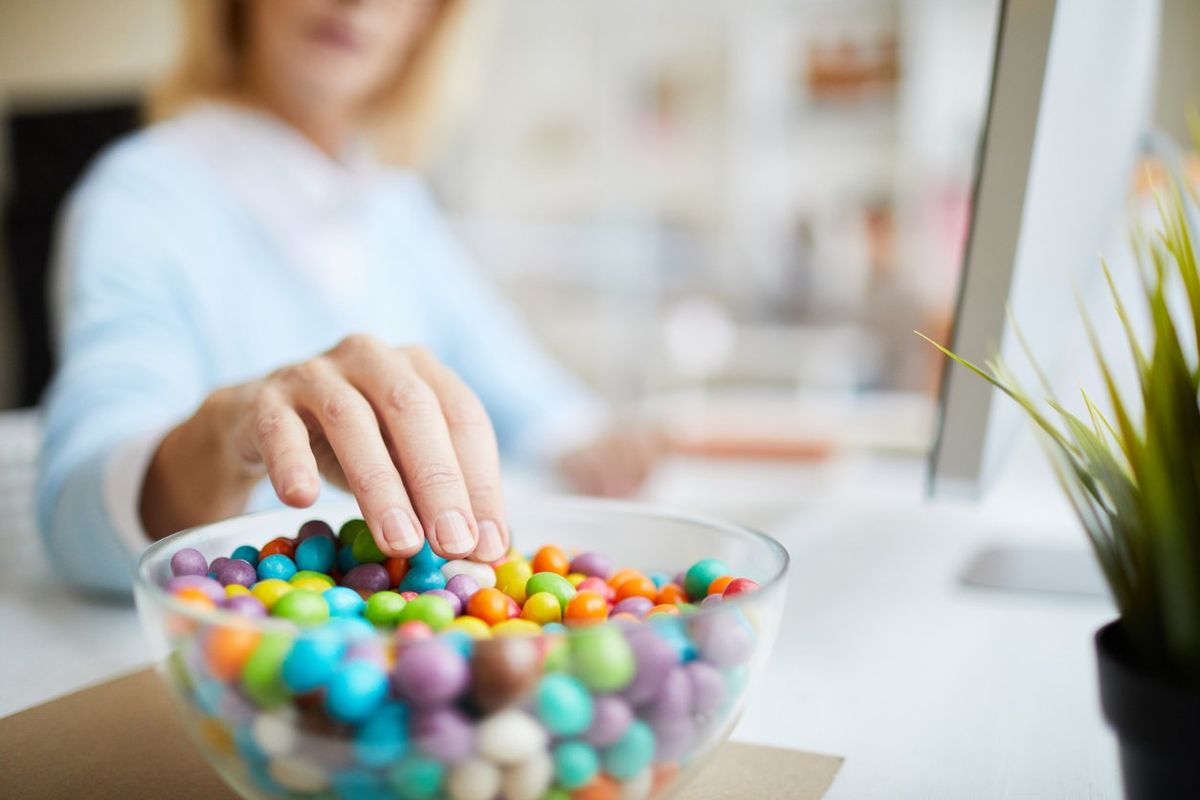
iStock.com/mediaphotos

Sheryl Kraft, a freelance writer and breast cancer survivor, was born in Long Beach, New York. She currently lives in Connecticut with her husband Alan and dog Chloe, where her nest is empty of her two sons Jonathan. Sheryl writes articles and essays on breast cancer and contributes to a variety of publications and websites where she writes on general health and wellness issues. She earned her MFA in writing from Sarah Lawrence College in 2005.
Full BioLearn about our editorial policies

There are some of us who are of the "salty and savory" variety. Their go-to snacks include just about anything with the word "chip" in it. They can't stand anything sweet (like dried cranberries) in their mixed salads but instead like to pile on the bacon bits. And when it comes to dessert, they'd rather eat some mixed (salty) nuts or cheese plate than a cookie.
And then there are the others: those whose tooth is so sweet that they can't get enough sugar. Candy is a perfect snack; sweet fruit a perfect accompaniment to salads, poultry and just about anything. Dessert? Yes, please—and I'll have seconds.
At least 10 percent of the calories the average American eats in a day come from added sugars. (If you consume 2,000 calories a day, that means that one and a half cans of regular soda—which contains about 35 grams of sugar per can—would exceed that 10 percent mark.)
Added sugar comes from the obvious sources, like cookies, cakes, sports and energy drinks, sodas and sweetened tea or coffee. More than one-third of the added sugar we consume comes from beverages. But added sugar also comes from less-obvious sources (even some that sound healthy), like pasta and barbecue sauces, salad dressings, granola bars, ready-to-eat cereals, instant oatmeal and frozen yogurt.
If too much of anything is bad, sugar is right up there as an offender. Let's count the ways:
So You Think You Can't Cut Your Sugar Habit?
Some people can turn their backs on sugar. But for others, it can cause cravings, a loss of control and an all-out, unintended sugar binge. It's not just your taste buds that respond to the sweet stuff: your brain factors into the equation, too. It sees sugar as a reward. And if it feels good to be rewarded, well then, doesn't it figure that your brain would want more of it?
What's a sweet tooth to do?
The American Heart Association recommends you get no more than half of your daily calories from added sugars. This means, for most American women, no more than about 100 calories per day, which is about 6 teaspoons. For men, it's no more than 150 calories per day, or 9 teaspoons.
Unfortunately, current nutrition labels list only total sugar content, which includes those naturally occurring sugars, as well as the added sugars and other sweetener ingredients. There are proposed changes to require a separate line for added sugars.
You need to read the ingredient list to tell if the product has added sugars. Added sugars may be called something else on nutrition labels—but alas, they're still "sugar." Other names include: cane juice, evaporated corn sweetener, fruit juice concentrate, crystal dextrose, glucose, liquid fructose, sugar cane juice, honey, molasses, maltose, malt syrup, sucrose, brown sugar and fruit nectar.
9 Quick Tips for Cutting Sugar
More Sweet Reading:
Sugar - It's Not Heart-Healthy
10 Reasons to Fear Sugar
How to Kick Your Sugar Habit Once and for All